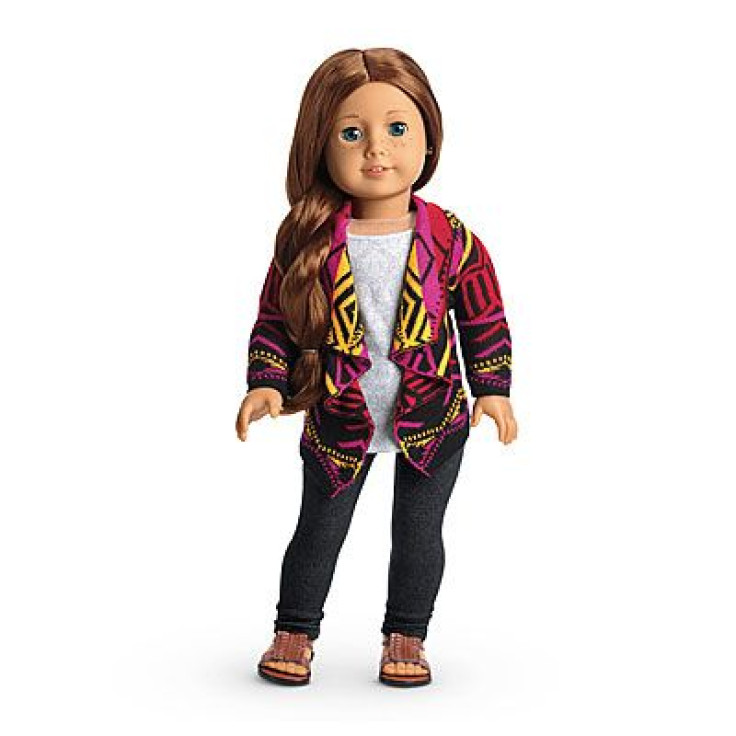Girl With Muscular Dystrophy Petitions For American Girl Doll With Wheelchair: Melissa Shang Says 'Disabled Girls Are American Girls Too' [VIDEO]

A Pennsylvania girl already knows what kind of doll she wants to get in 2015: an American Girl doll with a wheelchair. Although Melissa Shang’s wish list may seem ordinary to that of any 10-year-old girl, her request for a disabled doll stems from her desire to identify with the brand’s dolls. The vibrant and jubilant girl launched a campaign featuring a video on Change.org specifying she wants American Girl to name a doll with a disability as its 2015 "Girl of the Year" because "disabled girls are American girls, too.”
Shang has been a fan of the American Girl dolls since she was 7 years old, with her favorites being the “Girl of the Year” — a special edition character that highlights an overarching theme for the year with a back story that focuses on a modern-day issue. These special edition dolls have promoted issues such as community service and anti-bullying efforts to represent girls from all walks of life and every circumstance. Despite the company’s effort to strive for equal representation of all girls marketing dolls of various skin tones, hair color, and eye color, Shang notes none of the American Girl “Girl of the Year” dolls have a disability like her.
“Being a disabled girl is hard. Muscular dystrophy prevents me from activities like running and ice skating, and all the stuff that other girls take for granted. For once, I don’t want to be invisible or a side character that the main American Girl has to help: I want other girls to know what it’s like to be me, through a disabled American Girl’s story.”
Shang suffers from Charcot-Marie-Tooth (CMT), a form of muscular dystrophy. The Mayo Clinic says CMT is one of the most common inherited neurological disorders, affecting approximately one in 2,500 people in the United States. The neuropathy of CMT affects both motor and sensory nerves responsible for voluntary muscle activity such as speaking, walking, breathing, and swallowing. Typically, CMT patients will experience weakness of the foot and lower leg muscles, which may lead to a foot drop and a high-stepped gait accompanied by frequently tripping or falling. Shang’s CMT has left her disabled in a wheelchair.
The 10-year-old’s petition emphasizes while disabled girls like herself might be different from normal kids on the outside, they are the “same as other girls on the inside, with the same thoughts and feelings.” Shang believes American Girls are supposed to represent girls that make up American history, past and present, including disabled girls.
The doll company has made a conscientious effort to highlight the problems girls are likely to encounter in life through their books, movies and last year’s “Girl of the Year.” In 2012, McKenna — a talented gymnast who struggles with injuries and a learning disability — was featured as American Girl’s “Girl of the Year,” where her experiences were captured in the book and movie, ABC News reports.
American Girl has also made their dolls so they can be fitted with glasses, braces for the teeth, crutches or a wheel chair, and even began to make dolls without hair to show those who have lost hair to cancer. The doll company also began to offer “Special Sparkle“ accessories like a hearing aid and a guide dog to cater to the needs of their various customizable unique dolls. “It can help kids learn to be more accepting of others who are different from them,” Dr. Ari Brown, a developmental pediatrician in Austin, Texas told ABC News.
To sign Shang’s petition to get American Girl to release a doll with a disability, click here.



























